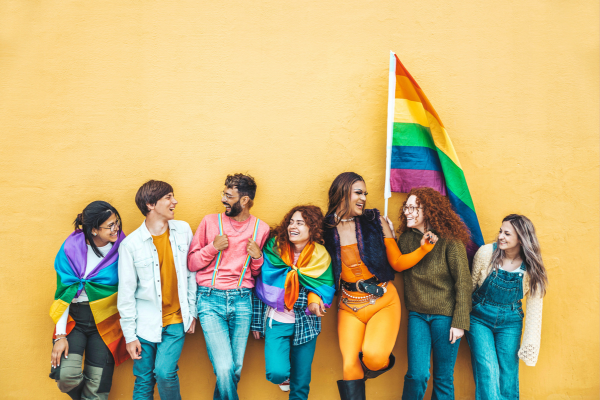Mental Health, LGBTQ Pride, & Preventing Youth Addiction: Tying It All Together
Posted on
During May we observed Mental Health Awareness Month, and throughout June we celebrate Pride Month. Each year, these events provide an opportunity to spread awareness, engage in dialogue, and take actionable steps toward positive change.

Take a look at how these two topics intersect with our 21 for a Reason campaign to prevent underage substance use, and learn about new resources from SERAC.
Underage Substance Use & Mental Health:
What’s the Link?
Each year in the United States, 1 in 6 children (aged 6-17) experience a mental health disorder. If this rate seems surprisingly high, consider that most mental health problems begin during youth—in fact, three-fourths of all lifetime mental illnesses start before age 24.
Regular substance use during the teen and adolescent years can exacerbate underlying mental health conditions, leading to an earlier onset and more severe symptoms. Why are these issues so often linked? Sometimes, young people begin drinking or using drugs in attempt to control or escape from the first symptoms of mental illness. However, even in youth with no pre-existing mental illness, repeated substance use can cause permanent changes to the brain, which continues developing until about age 25. Critical areas may become thinned, reduced in size, or damaged, increasing one’s risk for anxiety and depression, as well as other disorders which may appear later in life.
The facts are clear: High school students who drink alcohol are twice as likely to seriously consider suicide, and four times more likely to attempt it. Young cannabis users are two to four times more likely to develop psychiatric disorders, most notably schizophrenia. Even nicotine can disrupt brain development, leading to mood disorders and a lifelong greater susceptibility to addiction.
Mental wellness is therefore a major consideration in efforts to prevent underage substance use. SERAC’s 21 for a Reason campaign works to spread awareness of the many reasons behind Connecticut’s minimum age laws, and many of these topics also get examined in another of our campaigns, Bring the Light to Mental Health, which focuses on providing facts and dispelling myths about mental wellness. To urge people to examine their own relationships with mental wellness during Mental Health Awareness Month, we created new pages on the Bring the Light website highlighting how certain demographics are disproportionately impacted by mental health issues:
Above: LGBTQ+ Mental Health video from SERAC’s Bring the Light to Mental Health campaign
Why Pride Matters for Prevention
The stakes are high for gay, lesbian, bisexual, transgender, and queer/questioning young people: this population is more likely to use and become addicted to substances, and also more likely to experience anxiety, depression, and other mental health issues.
But these increased risks aren’t inherent with sexual orientation or gender identity. Rather, LGBTQ youth are far more likely to experience rejection from family members and peers, bullying, assault, and other distressing incidents stemming from discrimination and stigma—experiences which correlate with greater rates of depression, suicidality, and overall poor health in adulthood.
Without the support they need, many young LGBTQ people begin self-medicating with alcohol, tobacco, cannabis, and other drugs. They believe that these substances will help relieve their stress or control their mental health symptoms; substance use may also help them connect with others, alleviating feelings of rejection or isolation.
In the Trevor Project’s 2021 National Survey on LGBTQ Youth Mental Health, almost half (47%) of LGBTQ youth under age 21 reported having used alcohol in the past year, and 29% reported cannabis use. And among LGBTQ youth who regularly use these substances, rates of suicide attempts in the past year were measurably higher: 24% for regular drinkers (vs. 17% for LGBTQ youth who don’t drink regularly), and 27% for regular cannabis users (vs. 16% for LGBTQ youth who don’t use cannabis regularly).
The Wrap-Up
Mental Health Awareness Month and Pride Month both provide valuable opportunities to spark important conversations about the place of stigma in our society. Without acceptance and support, LGBTQ youth and young people struggling with mental health issues may consider suicide or may turn to self-medicating, leading them into a lifelong struggle with substance use.
But overcoming stigma is not done overnight, nor can it be done alone. Teens and adolescents need support within their families, schools, and communities, and their needs must be advocated for in healthcare and policymaking settings. It is crucial that we talk about mental health issues and LGBTQ+ equality not just in May and June, but year-round.
